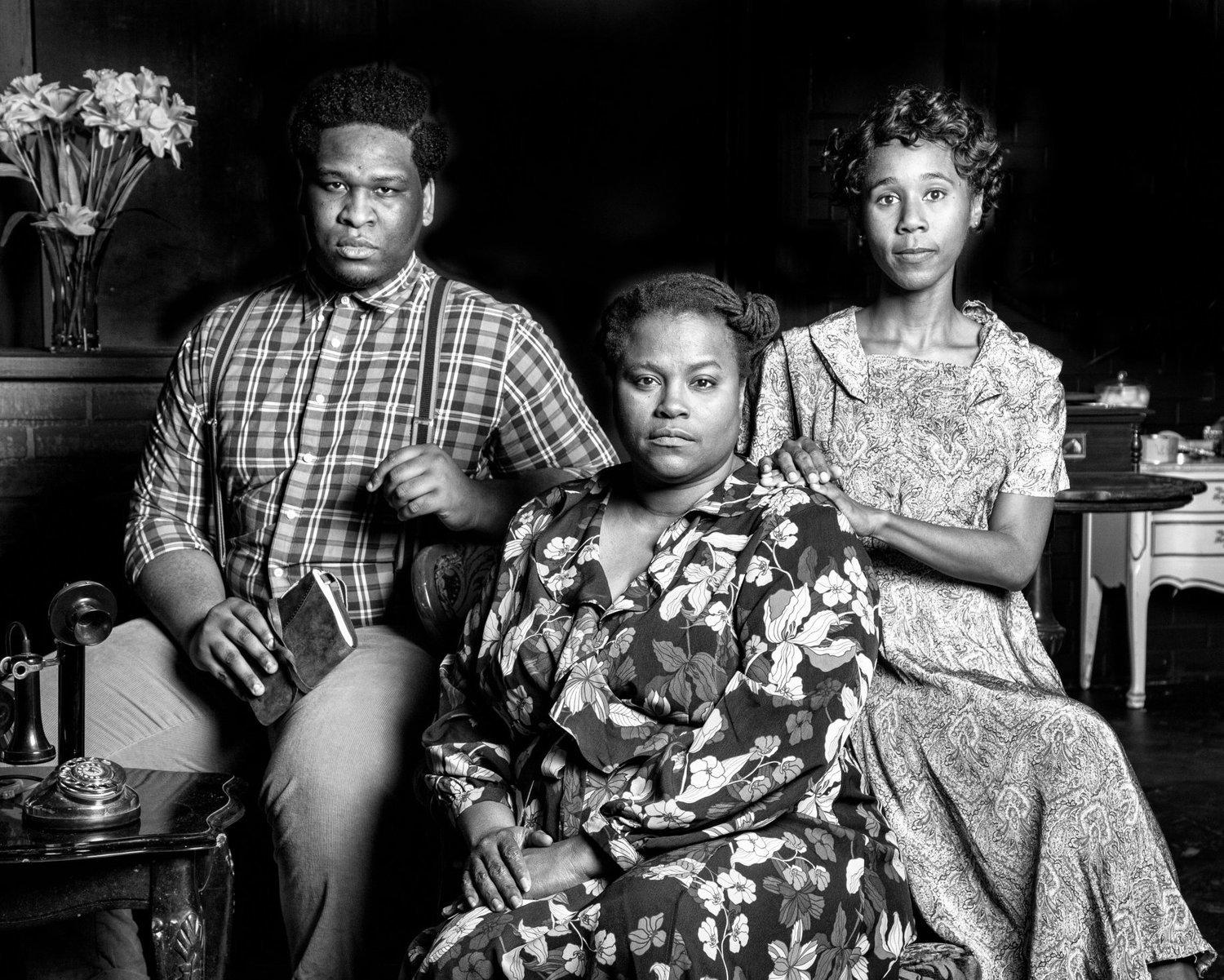Review: THE GLASS MENAGERIE Glistens at The Firehouse Theatre

With the dawn of the new year comes an opportunity to reflect on our pasts. We make resolutions and finally commit to pursuing our hopes and dreams. Perhaps we finally decide to quit our dead-end jobs or put ourselves back in the dating scene after so many months or years away.
The characters of THE GLASS MENAGERIE resolve to better their lives in such a way only to discover pain and heartache that they never could have imagined. Tennessee Williams's moving drama is running at The Firehouse Theatre through January 27.
Most anyone who has taken a high school English class is probably familiar with THE GLASS MENAGERIE, Williams's first hit on Broadway in 1946. The play's narrator, Tom, recounts his final days living in a small St. Louis apartment with his Southern debutante mother, Amanda, and his painfully shy and crippled sister, Laura. Amanda obsesses over providing better lives for her children, pushing them away rather than drawing them closer to her.
What makes Firehouse Theatre's production so exciting, though, is director M. Scott Tatum's decision to explore how racial minorities would have experienced this storyline in the segregated St. Louis of the 1940's. By casting Tom, Amanda, and Laura Wingfield as an African-American family, new societal pressures and forms of racial oppression come to light in the narrative that audiences might not otherwise be made aware of.
Because of these casting choices, the play takes on an added layer of tragedy that is sure to move audiences to tears much as it did on opening night. Try as Amanda might to make a better life for her children, the color of their skin blocks them from traveling down the roads of success she has envisioned for them. She encourages Tom to pursue night classes so that he can leave his job at a shoe warehouse, yet we know that it is almost hopeless for him to find a better paying job at a time when most workplaces were still highly segregated. When Tom tells his mother that he "makes a slave of himself" for the family, the reality of the line becomes palpable. It is hard to deny that the exhausted man in front of us - a black man most likely descended from slaves - is still very much a slave to society.
Gen Donnell plays Tom with a cold bitterness that, in other productions, might grow stale or boring. But Donnell skillfully balances the character's frustrations with his family and his frustrations as a black man with limited opportunities. When facing off against Amanda, he slouches and turns away, seeming to be physically suffocated by her presence. On the other hand, when he directly tells the audience of his hopes and dreams, he stands taller and more confidently. He has a light in his eyes that seems hard to extinguish. Donnell's Tom may not know what lies ahead but anything must be better than the life he wants to leave behind.
Kimberly Nicole portrays Tom's sister Laura with a subtle smile and wide eyes that become the picture of heartbreaking innocence. As she hovers obsessively over her glass figurines and refuses eye contact with anyone around her, audiences will be left to wonder if Laura might be different in ways other than her physical limitations. This acting and directorial choice adds yet another layer of complexity to a character that has grown familiar over the generations.
The final scene between Nicole and Gustavo Hernandez provides some of the play's most moving moments. Hernandez plays Jim, the man Amanda hopes to set Laura up with, and he exudes confidence and assurance in a way the other characters cannot. He succeeds as both the image of all-American bravado and as the lovingly tender potential husband for Laura. This makes it all the more unbearable when Jim leaves without any hope of returning. Is he really engaged to someone else or does his lighter skin forbid him from even considering a relationship with a black woman? This is this production's most profound lingering question.
Monique Ridge-Williams gives a bravura performance as Amanda Wingfield that left the opening night audience literally rushing to their feet. The role of Amanda, portrayed on stage by actresses as famous as Jessica Lange and Sally Field, is a notoriously demanding one, and Ridge-Williams proves herself up to the task. Speaking in a refined manner reminiscent of the Old South, Ridge-Williams delivers her lines with precision and a surprising degree of humor. Lines that I have read countless times seemed improvised when spoken in her scenes, bringing the script to life in ways I hadn't encountered before.
The actors are supplemented in their performances by Brandon Tijerina's set, a cramped living room without walls that is surrounded by suspended windows. This creates the effect of a fractured space, one that is being created piece by piece in Tom's memory while also crumbling to dust in Amanda's reality. Tijerina also pulls double-duty as costumer, appropriately dressing Laura in drab unflattering dresses and Amanda in shimmering, colorful outfits. When all combined on The Firehouse Theatre's intimate stage, these creative and technical choices breathe new life into a once familiar classic.
Photo Credit: Jason Anderson / Pendleton Photography
Add Your Comment
Join Team BroadwayWorld
Are you an avid theatergoer? We're looking for people like you to share your thoughts and insights with our readers. Team BroadwayWorld members get access to shows to review, conduct interviews with artists, and the opportunity to meet and network with fellow theatre lovers and arts workers.
Interested? Learn more here.
Videos
